Disclosure: This article contains affiliate links. We may earn a commission from purchases at no extra cost to you, which helps our travel content.
The first time I touched the intricately hammered copper of a Bukharan teapot, my machinist's fingers could feel the centuries of technique passed through generations. This wasn't just metal—it was history made tangible. Standing in the shadow of the ancient Poi-Kalyan complex with the autumn sun casting long shadows across the weathered stone, I realized Bukhara isn't a destination you simply visit; it's one you experience with all your senses. The scent of saffron and cumin wafting from courtyard kitchens, the symphony of hammers from the metalworking bazaars, and the whispered echoes of merchant caravans that once traversed these same paths—this is the Bukhara that captured my heart. After five visits to Central Asia, I've crafted this guide to help solo travelers dive deep into this Silk Road jewel, where every alleyway tells a story and every craftsperson is a keeper of ancient knowledge.
Navigating Bukhara's Living Museums
Bukhara isn't a city with museums—it is the museum. While most tourists rush through the major sites in two days, I've found that a full week allows you to peel back the layers of this UNESCO World Heritage city at a pace that reveals its true character.
Start at Lyabi-Hauz, the central pond surrounded by ancient mulberry trees and madrasas. Rather than just snapping photos, claim a spot at a chaikhana (tea house) and linger for at least an hour. I've spent countless afternoons here with my travel journal, sketching architectural details and watching local elders gather for chess and conversation. The longer you sit, the more the rhythms of daily life reveal themselves.
The Trading Domes that once housed bustling bazaars now shelter craftspeople practicing centuries-old techniques. As someone who works with metal daily, I was mesmerized by the coppersmiths in Toki-Sarrafon, where I later arranged an impromptu workshop with a master craftsman named Timur. For 30,000 som (about $3), he taught me the basics of traditional pattern-hammering—knowledge that has informed my own metalwork back in Austin.
Don't miss the less-visited sites like the Chor-Minor with its quirky four minarets or the Maghoki-Attar Mosque, partially buried below street level and one of the oldest structures in Central Asia. I found that visiting these spots during midday when tour groups retreat from the heat provided almost private viewings of these architectural marvels.

💡 Pro Tips
- Visit major monuments before 9 AM or after 4 PM to avoid tour groups and harsh midday light
- Arrange informal craft workshops directly with artisans—most are eager to share their knowledge for a modest fee
- Carry small denominations of som for spontaneous purchases and experiences
Artisan Encounters: Beyond Tourist Trinkets
My machinist background has given me a deep appreciation for how things are made, and Bukhara is paradise for anyone fascinated by traditional craftsmanship. While tourist shops line the main thoroughfares, the authentic workshops are tucked away in residential neighborhoods and family compounds.
The silk weaving traditions here date back millennia, and watching master weavers operate traditional looms is hypnotic. In the workshop of the Rakhimov family, I spent an afternoon learning about natural dyeing techniques using pomegranate rinds, walnut shells, and indigo. The geometric precision of their suzani embroidery patterns reflects mathematical principles that have remained unchanged for centuries.
Metal crafts hold a special place in Bukharan culture. The distinctive blackened silver jewelry known as chasing involves techniques remarkably similar to some I use in my machine shop back home. I couldn't resist purchasing a set of traditional tools from an elderly craftsman who seemed genuinely delighted that someone with technical knowledge appreciated the ingenuity of his hand-forged implements.
Puppet making represents another fascinating craft tradition. At Iskandar Khakimov's workshop near Chor Minor, I watched him carve expressive faces from dried gourds before painting and dressing them in miniature traditional costumes. Each puppet tells a story from Uzbek folklore, and Iskandar often gives impromptu performances for visitors who show genuine interest.
To truly engage with these artisans, I found my pocket translator device indispensable. While younger Bukharans often speak some English, most master craftspeople communicate only in Uzbek or Russian. This small investment opened countless doors to authentic cultural exchanges.
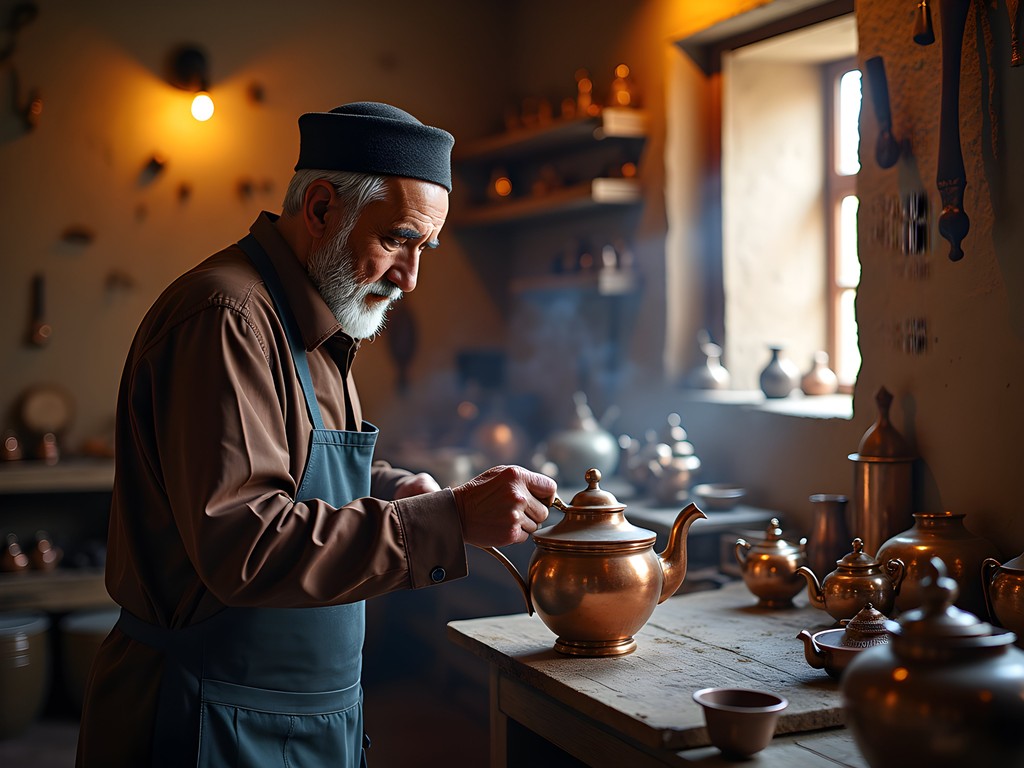
💡 Pro Tips
- Learn a few Uzbek phrases—even basic greetings earn tremendous goodwill from local artisans
- Visit workshops in the morning when craftspeople are often most willing to demonstrate techniques
- Ask permission before photographing artisans or their work, and consider purchasing something small in appreciation
Home-Cooked Uzbekistan: Culinary Cultural Exchange
The real flavors of Uzbekistan aren't found in restaurants catering to tourists—they're simmering in family kitchens across Bukhara. The city's homestay network offers more than just affordable accommodation; it provides an entrance into domestic life that most travelers never experience.
I stayed with the Rakhimova family in their 200-year-old traditional house near Chor-Bakr necropolis. For about $25 per night, I had a simple but comfortable private room arranged around a central courtyard. What made this stay extraordinary was Nodira, the family matriarch, who insisted I join her in the kitchen each evening.
Together we prepared dishes rarely found on restaurant menus: naryn (hand-pulled noodles with horse meat), tukhum barak (egg dumplings), and kovurma lagman (fried hand-pulled noodles with vegetables). My background in precision work came in handy when learning to roll out paper-thin dough for manti dumplings, earning approving nods from Nodira.
The family's tandoor oven became the center of my culinary education. Using techniques passed through generations, we baked non bread studded with nigella seeds, its pattern created by a wooden stamp called a chekich that Nodira's grandfather had carved. I've since recreated these recipes at home using my cast iron dutch oven, which approximates the tandoor's heat retention reasonably well.
Beyond cooking, these kitchen sessions became cultural exchanges where we discussed everything from wedding traditions to child-rearing practices, using a mix of broken English, my few Uzbek phrases, and plenty of gestures. When words failed, the universal language of food preparation bridged our differences.
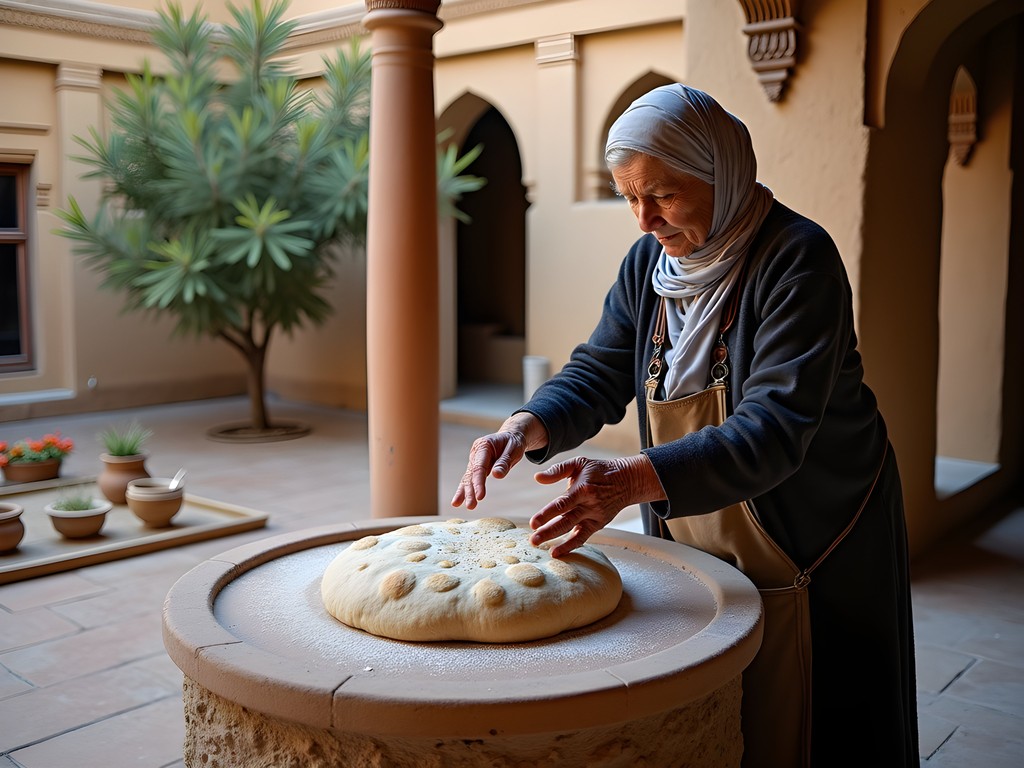
💡 Pro Tips
- Book homestays directly through local agencies in Bukhara rather than international booking sites for more authentic experiences
- Bring small kitchen tools from home as meaningful gifts for host families
- Ask to accompany family members to local bazaars to learn about ingredients and haggling techniques
Dawn Rituals and Twilight Traditions
Bukhara reveals different faces depending on the hour, and experiencing both its dawn and dusk rituals provided some of my most meaningful memories.
Rising before sunrise, I joined local men gathering at the 16th-century Bolo Hauz Mosque for morning prayers. While non-Muslims can't participate in prayers, sitting respectfully in the courtyard as the muezzin's call echoed across the sleeping city created a profound connection to Bukhara's spiritual heritage. The early light illuminating the mosque's 20 wooden pillars created a forest-like sanctuary that my compact mirrorless camera barely captured despite its excellent low-light capabilities.
After prayers, follow the men to neighborhood chaikhanas for breakfast. At Chasmai Mirob near Lyabi-Hauz, I joined a table of elderly Bukharans breaking freshly-baked non bread and sipping fragrant green tea. Though we shared few words, the ritual of breaking bread transcended our language barrier.
As day surrenders to evening, Bukhara's rooftop culture comes alive. I arranged access to several historic rooftops through my homestay hosts, including one above a centuries-old carpet workshop near Maghoki-Attar Mosque. From this vantage point, I watched the setting sun gild the city's domes and minarets while families gathered on nearby rooftops to escape ground-level heat.
The most magical evening experience came through a connection with local university students practicing traditional instruments. Through a friend at my homestay, I was invited to an informal meshrab (musical gathering) in a family courtyard. Young musicians played the dutar (two-stringed lute) and doira (frame drum) while sharing folk songs that have accompanied Silk Road travelers for centuries. When they discovered my interest in craftsmanship, one player showed me how the dutar's neck is carved from a single piece of apricot wood using techniques unchanged for generations.
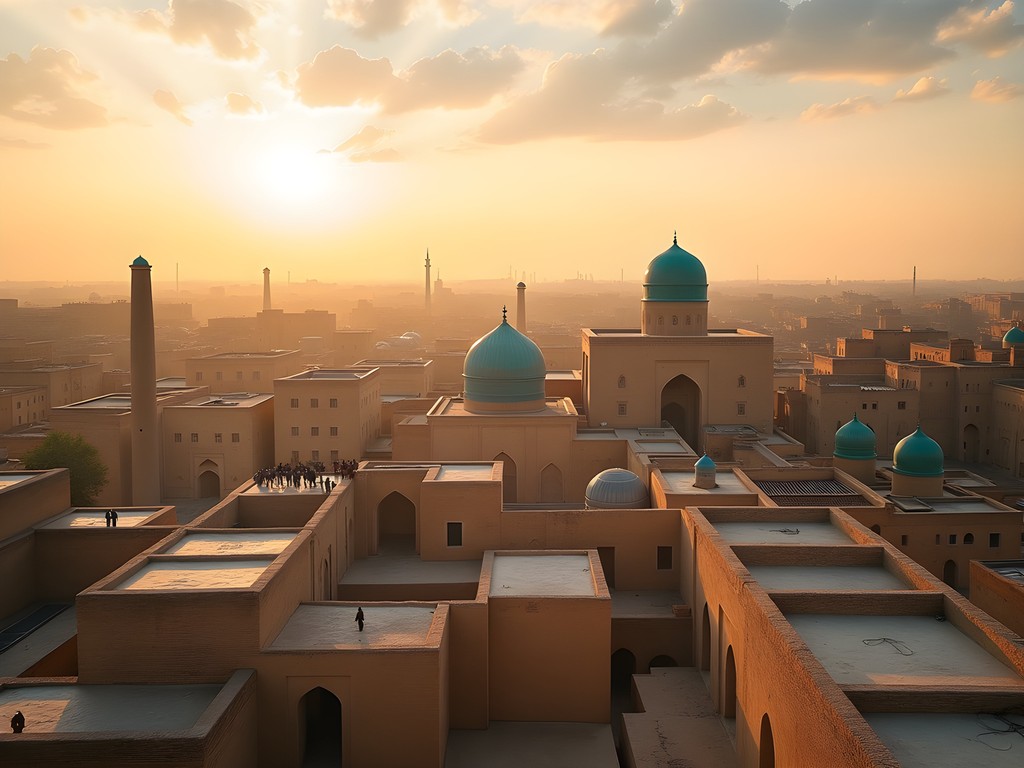
💡 Pro Tips
- Dress modestly when visiting religious sites—women should cover shoulders and knees, and bring a scarf for hair covering
- Ask your homestay host about rooftop access—many families have connections to buildings with spectacular viewpoints
- Connect with students from Bukhara State University who often welcome cultural exchange opportunities with foreign visitors
Desert Excursions: Bukhara Beyond the Walls
While Bukhara's ancient core captivates most visitors, some of my richest experiences came from venturing into the surrounding landscapes that have shaped the city's character for millennia.
The Kyzylkum Desert begins just beyond the city's outskirts, and day trips reveal a stark beauty that contrasts dramatically with Bukhara's architectural density. I arranged a desert excursion through my homestay host's cousin, who maintains a small yurt camp about 45 minutes from the city. For $40, I enjoyed a full day experience including transportation, meals, and activities.
Riding on Bactrian camels across rippling sand dunes offered perspective on the challenges faced by ancient Silk Road caravans. My guide, Rustam, pointed out subtle features in the seemingly featureless landscape that traditional navigators used as waypoints. As someone who appreciates technical precision, I was fascinated by these natural navigation techniques that predated modern tools by centuries.
The desert excursion culminated in a sunset meal at the yurt camp, where we dined on plov (Uzbekistan's national rice dish) cooked over an open fire. The desert's silence was profound, broken only by the occasional distant call of birds and the gentle crackling of the cooking fire. I found my insulated water bottle essential for these desert excursions—Bukhara's autumn days can still reach surprisingly high temperatures despite cool evenings.
For those seeking a deeper desert experience, several local outfitters offer overnight stays in traditional yurts with basic but comfortable accommodations. Under the desert's impossibly star-filled sky, local guides share ancient folklore and astronomical knowledge passed through generations. The Milky Way viewed from the Kyzylkum Desert, far from any light pollution, reveals itself with a clarity I've rarely experienced elsewhere.

💡 Pro Tips
- Book desert excursions through local contacts rather than hotels to support community-based tourism
- Pack a lightweight scarf that can double as sun protection and evening warmth in the desert
- Bring sufficient water and sun protection even for autumn desert excursions—the UV index remains high
Final Thoughts
As I packed away my tools from an impromptu metalworking session with a seventh-generation Bukharan craftsman, I realized what makes this ancient Silk Road city so profound: it's not just preserving history—it's living it. The techniques I witnessed aren't museum demonstrations; they're practical skills supporting families and communities just as they have for centuries. Bukhara rewards the patient traveler who steps away from the guided tour route and into the workshops, kitchens, and courtyards where authentic cultural exchange happens. Whether you're admiring the mathematical precision of architectural muqarnas or feeling the perfect balance of a handcrafted copper teapot, Bukhara speaks to those who appreciate the marriage of function and beauty. Come with time to spare, respect for tradition, and willingness to connect beyond language barriers. The Silk Road may no longer carry caravans of goods across continents, but in Bukhara, it continues to facilitate the exchange of something far more valuable—human connection and cultural understanding.
✨ Key Takeaways
- Allocate at least a week to experience Bukhara's layers beyond the standard tourist circuit
- Seek out craftspeople in their workshops to witness living traditions rather than just buying souvenirs
- Homestays provide deeper cultural immersion than hotels, particularly through shared meals and family connections
📋 Practical Information
Best Time to Visit
September to early November
Budget Estimate
$30-50/day including homestay accommodation
Recommended Duration
7 days minimum
Difficulty Level
Moderate
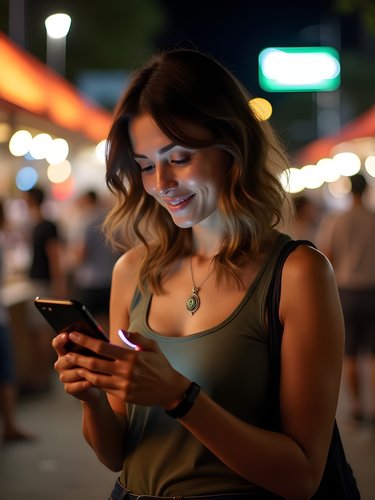
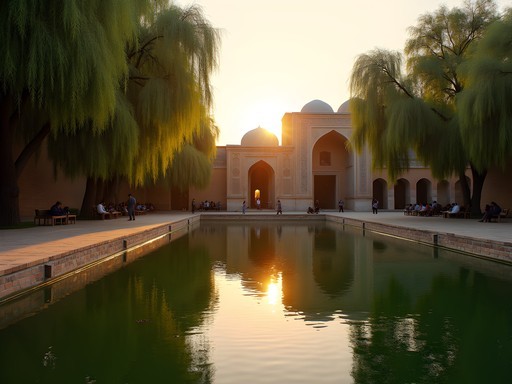
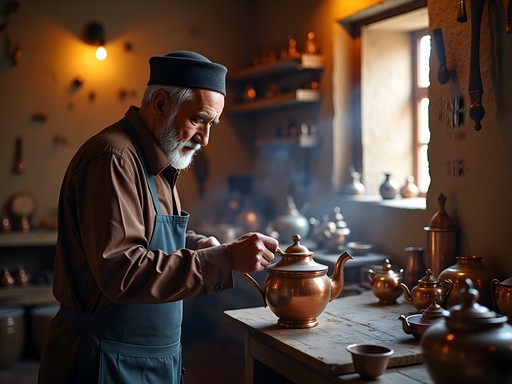
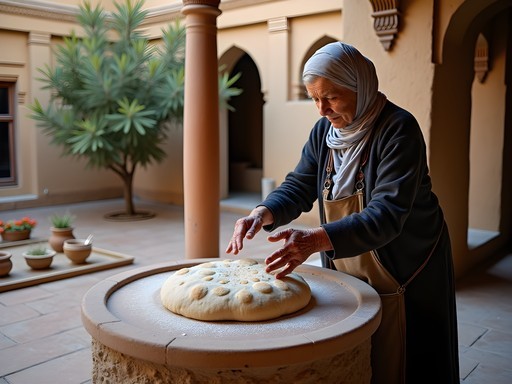
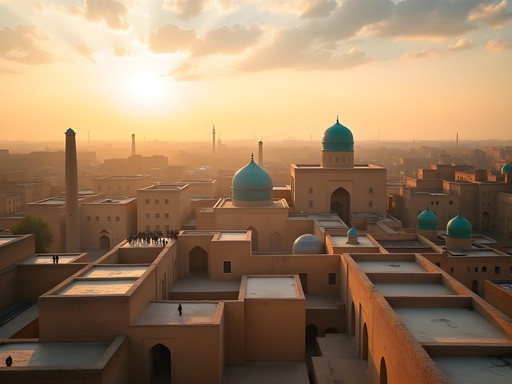
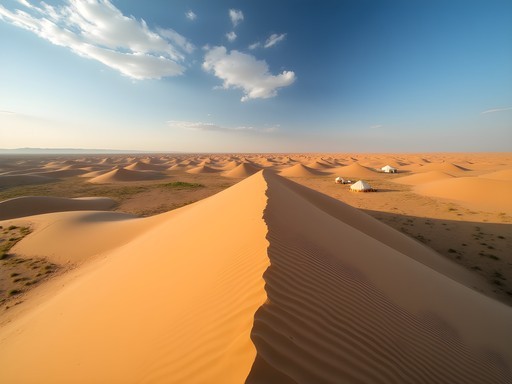


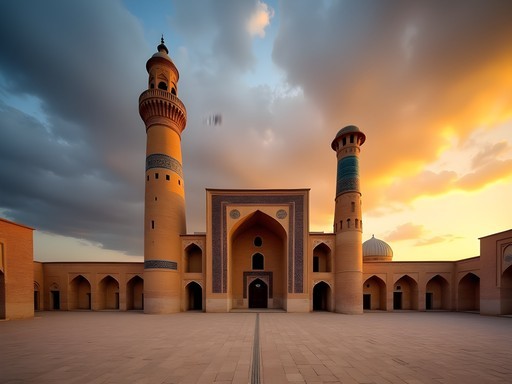







Comments
mountainmood
Those sunrise photos from the minaret are breathtaking! How early did you have to get up for that golden light?
Anna Cruz
I was up at 4:30am in summer! But so worth it - had the place almost entirely to myself.
Sage Dixon
Anna, you've captured the soul of Bukhara beautifully. As someone who's traveled the entire Silk Road route over the years, I still find Bukhara to be the most authentic remnant of that era. Your focus on the artisans rather than just the architecture is spot on - it's the living culture that makes this place special. Last time I visited, I spent a week apprenticing with an elderly woodcarver who creates the intricate columns for traditional houses. My hands were blistered, but the stories he shared while we worked were worth every splinter! For anyone planning a visit, venture beyond the main tourist areas to the residential mahallas (neighborhoods) - that's where you'll find the workshops Anna mentioned, often unmarked and discovered only through local connections.
winterhero
Just got back from Uzbekistan last month and your post captures the magic of Bukhara perfectly! That feeling when you're invited into someone's home for tea and suddenly three hours pass... pure Uzbek hospitality. We ended up in an impromptu music session with our host family playing traditional instruments. Did anyone else struggle with the language barrier though? Our translation app was a lifesaver.
moonadventurer
I'm planning a trip to Uzbekistan next spring! How many days would you recommend for Bukhara? And did you feel safe as a solo female traveler?
Anna Cruz
I'd recommend at least 3 full days in Bukhara - one for the main sights, one for workshops/artisans, and one for just wandering. I felt incredibly safe as a solo female traveler. The locals were protective and hospitable rather than intrusive. Just dress modestly out of respect!
exploreking
Totally agree with Anna. I spent 4 days and could have stayed longer. Bukhara was actually the place I felt safest in Central Asia. Make sure to visit the Jewish quarter too - fascinating history there that many tourists miss.
Casey Andersson
Anna, your machinist's perspective brings such a unique lens to Bukhara's craftsmanship! I visited last year and stayed at a small family guesthouse near Lyab-i-Hauz where the grandmother taught me to make plov in their courtyard kitchen. There's something magical about those dawn walks through the old town before the tour groups arrive - the light hitting the ancient madrasas just so. Did you find that staying with locals gave you access to parts of the culture that would otherwise be hidden? I've found that's where the real magic happens on the Silk Road.
Anna Cruz
Absolutely, Casey! The family I stayed with actually introduced me to that metalworker I mentioned. Without that connection, I'd have just been another tourist watching from a distance instead of getting my hands dirty in the workshop. Those pre-dawn walks were magical too - did you catch the bread bakers firing up their tandoors?
Casey Andersson
Yes! The tandoor bread was the highlight of my mornings. I carried my travel journal everywhere and sketched those bakers at work - such concentration in their movements.
skylife
Those copper teapots look incredible! Adding this to my bucket list.
exploreking
This post transported me right back to Bukhara! The artisan workshops were the highlight of my trip too. Nothing beats watching those copper masters work their magic - their hands tell stories generations old. Did you try your hand at the suzani embroidery workshops too?
Anna Cruz
Thank you! I did try the suzani embroidery but my mechanical engineer fingers aren't quite as nimble with thread as they are with metal. Still have the (very imperfect) piece I made hanging in my workshop!
coffeeone
That sunrise photo of the Poi-Kalyan complex is absolutely stunning! What time did you have to wake up to catch that perfect light?
Anna Cruz
Thanks! That was around 5:30am in May - totally worth the early alarm. The muezzin's call to prayer started just as I was setting up my tripod. Magical moment!
backpackace
Heading to Uzbekistan in October. How many days would you recommend in Bukhara vs Samarkand? And did you use a phrasebook or translation app? My Russian is nonexistent!
Casey Andersson
Not Anna, but I spent 3 days in Bukhara and 2 in Samarkand last year. Personally found Bukhara more charming and authentic - Samarkand has grander monuments but feels more restored and touristy. For language, I used Google Translate offline Uzbek language pack which was surprisingly helpful, especially for reading menus! Most younger people speak some English, and hand gestures go a long way. October should be perfect weather too!
backpackace
Thanks Casey! Downloading that app now. Did you stay in a guesthouse or hotel?
Casey Andersson
Definitely go with a family-run guesthouse! The hospitality is incredible, breakfasts are amazing, and they'll connect you with local experiences you'd never find otherwise.
bluebackpacker
Great post! How did you find these authentic artisan workshops? Were they easy to locate or did you need a local guide?
Anna Cruz
I found some through my guesthouse owner who had family connections, but honestly just wandering the side streets beyond Lyabi-Hauz revealed many workshops. Look for places where actual work is happening, not just selling. Most artisans are happy to demonstrate if you show genuine interest!
Venture X
Premium card with 2X miles, $300 travel credit, Priority Pass